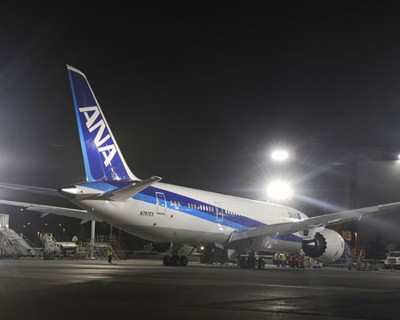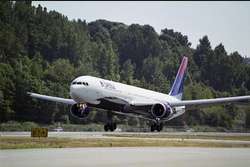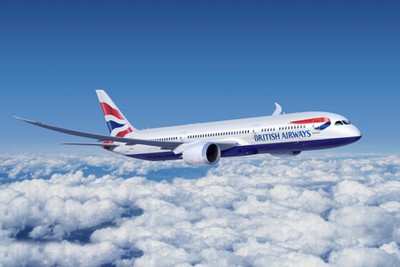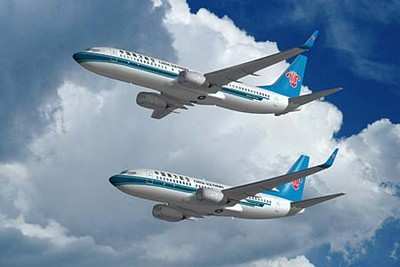Frost & Sullivan Says 2010 Is Expected To Be A Better Year
For Airlines
 An aviation industry analyst says
the turmoil surrounding the aviation industry is finally expected
to calm, and 2010 could be a year of slow but steady
improvement.
An aviation industry analyst says
the turmoil surrounding the aviation industry is finally expected
to calm, and 2010 could be a year of slow but steady
improvement.
According to Frost & Sullivan's Asia Pacific Research
Analyst of Aerospace & Defense Practice Chen Chen Wai,
passenger traffic statistics clearly indicate the significant
decline across the globe, with 2% growth in 2008 against a high of
8% growth in 2007. "The first half of 2009 saw traffic declined
even further, bringing a negative growth to the industry," he
continued. "As the economy began its slow ascent to recovery,
passenger traffic also followed the same path to recovery with the
fourth quarter showing much improved growth. The regions of Middle
East, Latin America and Asia Pacific are the first regions to show
positive signs of recovery."
Tourism is one of the key factors that have sustained the
aviation industry as business traffic suffered most during the two
year period. Relationships that have developed between both
airlines and airports have strengthened as all are emphasizing on
sustainability to weather this storm. "Alternative revenue streams,
code sharing, route optimization, collaboration, green initiatives,
innovative fuel saving techniques are all strategies employed by
industry stakeholders to remain afloat. However, there have been
casualties as well for those that were unable to overcome the
challenges," adds Chen.

Moving into 2010, airlines will continue to thread carefully,
looking at profitable routes and reorganizing their network to
drive growth in their business. "Both the point-to-point and
hub-to-hub network will continue to be key factors as they cater to
the different travel needs across the globe. The important role of
low-cost carriers have contributed to the growth of passenger
traffic especially in Asia Pacific and is expected to be the pillar
in pushing the aviation industry forward, once again imparting
confidence in travelers to take to the skies again," says Chen.
He adds, "With airlines spearheading the aviation industry from
the skies, the pillars fixed on the ground are the airports. Unlike
airlines, airports have managed to sustain their business
differently by seeking alternative revenues especially from their
landside business."
 "Non-aeronautical revenues are contributing even higher
percentages of the total airport earnings as airports are no longer
merely transportation hubs but a whole experience by itself.
Airport cities, developed around the airport as the center will be
the key to the aviation growth in the coming years," he
continues.
"Non-aeronautical revenues are contributing even higher
percentages of the total airport earnings as airports are no longer
merely transportation hubs but a whole experience by itself.
Airport cities, developed around the airport as the center will be
the key to the aviation growth in the coming years," he
continues.
Airport development has not dwindled but has continued to
support to the industry moving forward. According to Chen, despite
the slowing economy, some airports have continued to show growth in
their traffic and revenues. "Strategic implementation of best
practices in optimizing cost, seeking alternative revenues,
developing their landside businesses and investing in green
initiatives have enabled airports to continue to move forward with
confidence to drive the aviation industry back to its glory days,"
he says.
In Asia Pacific, airport development in South East Asia, China
and India are staging the scene for future growth and expansion of
the travel network bringing the world closer to one another. Frost
& Sullivan estimates potential spending of almost $100 billion
in airport development and expansion within the next 10 years. It
is also estimated that there will be over 300 airports to be
developed within the next 10 years in China and India alone.

Security in airports has been one of the most discussed issues
in recent times, with the latest being the terrorist attempt near
the end of 2009. Many technology implementations have been
developed to create a safer environment for passengers, since the
tragedy that befell the world on September 11, almost a decade ago.
Chen says, "There have been many types of airport security
technologies over the years like x-ray detection, metal detection,
fingerprint, CCTV and more. Over the next ten years, more
technologies will be implemented to maintain a higher level of
security and confidence of passengers that are traveling by air.
Electronic passports, face detection technologies, digital IP-based
surveillance, and nanotechnology sensors are some of the potential
technologies that will see its implantation at airports around the
world."
In term of industry specifics, the cries of environmental
activists have given rise to green initiatives across the air
travel and transportation industry which contributes about 2% of
the total carbon emissions globally. According to Chen, "In the
past 15 years, airlines have shown decreasing usage of aviation
fuel, indicating increased fuel efficiency and new technologies
being introduced to improve the usage of fuel in aircraft. This
trend is expected to continue over the next 10 years as bio fuel
and other alternative fuel is being research and developed to
support the industry."

Overall, 2010 is expected to be a better year for the industry.
The major push factor for the aviation industry to see brighter
skies this year would be the World Cup and Commonwealth Games that
will be held this year in Africa and India respectively. The demand
for air travel during these periods will escalate, driving growth
for the aviation industry across the world. "Being touted as major
global sporting events, the World Cup and Commonwealth will
definitely be a driving factor in the aviation industry, increasing
passenger traffic and revenues for both airlines and airports,"
Chen says.
 ANN FAQ: Contributing To Aero-TV
ANN FAQ: Contributing To Aero-TV Aero-News: Quote of the Day (12.10.25)
Aero-News: Quote of the Day (12.10.25) ANN's Daily Aero-Term (12.10.25): North Atlantic High Level Airspace (NAT HLA)
ANN's Daily Aero-Term (12.10.25): North Atlantic High Level Airspace (NAT HLA) Airborne 12.08.25: Samaritans Purse Hijack, FAA Med Relief, China Rocket Fail
Airborne 12.08.25: Samaritans Purse Hijack, FAA Med Relief, China Rocket Fail Airborne-Flight Training 12.04.25: Ldg Fee Danger, Av Mental Health, PC-7 MKX
Airborne-Flight Training 12.04.25: Ldg Fee Danger, Av Mental Health, PC-7 MKX







